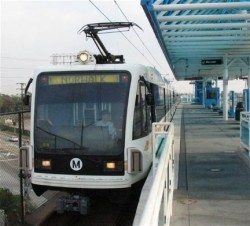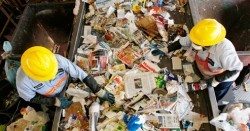Politics & Government
Twenty-Five Ideas for Mayor Garcetti
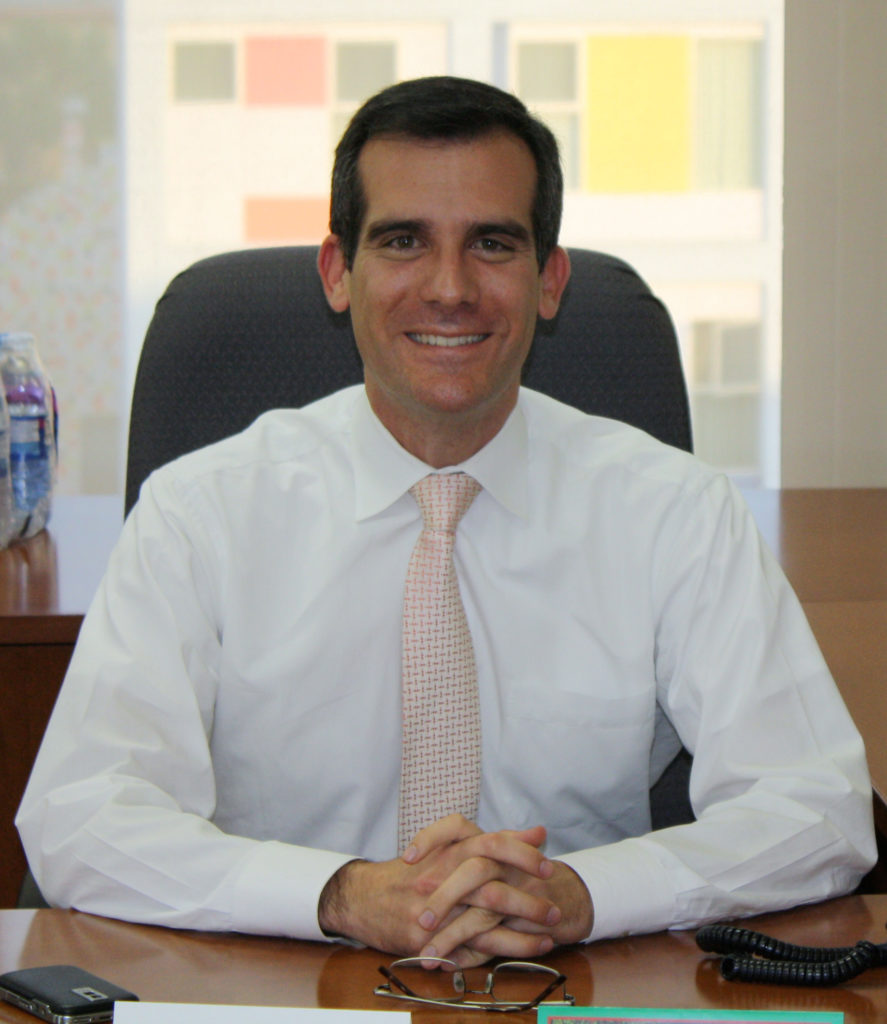
Eric Garcetti has enormous potential to be one of L.A.’s great mayors. He is young (just 42), full of energy, experienced in politics and government, passionate about L.A., brimming with policy ideas, compassionate toward the disadvantaged and a great communicator and explainer. I saw many of these traits up-close when I co-taught a course with him at Occidental College in 2000, and have watched him blossom as he joined the City Council and served as its president.
Now he faces the daunting challenges of running America’s second-biggest, and most diverse, city.
No mayor can succeed unless he or she attends to the routine civic housekeeping tasks that residents expect from municipal governments – fix the potholes, keep traffic flowing, maintain public safety, keep the parks and playgrounds clean and in good repair.
But Garcetti didn’t run for mayor just to be a caretaker. He promised more. He can build on some of the successes of his predecessor but also stake out new directions.

Garcetti inherits a city with more millionaires than any other, while also the capital of homeless and the working poor.
Garcetti inherits a city where the divide between the rich and everyone else is widening. It has more millionaires than any other city but is also the nation’s capital of the working poor. Equally important, the condition of the city’s middle class is precarious as the prices of basic things like housing, health care, food and gas increase faster than incomes.
Despite several years of declining housing prices, the city still has a huge shortage of homes that most L.A. workers and residents can afford. This undermines the city’s business climate. L.A. is a city of renters (over 60% of the population) and most of them are paying more than they can afford just to keep a roof over their heads. If families are paying half or even two-thirds of their incomes in rent, as many are, they have little left to spend at neighborhood businesses and for other basic necessities. And they are constantly at risk of losing their homes. So, not surprisingly, L.A. is the nation’s homelessness capital.
Moreover, the nation’s epidemic of foreclosed and “underwater” homes (where the mortgage exceeds the value of the home) has damaged Los Angeles in several ways. Even if home prices rise, as they are doing now, many families are hurting, victims of banks that engaged in risky, reckless predatory lending. But these banks have not been held accountable for bursting the housing bubble, which led to plummeting home prices and a huge loss in property tax revenues. This – and not the pay and pensions for municipal employees – is the major cause of the city’s fiscal problems.
Los Angeles outgrew its suburban roots years ago when the freeways became parking lots. Now Los Angeles needs to grow up around transit stops. Making public transit a real possibility for people trapped in their cars means both building up Los Angeles’ bus and rail system and building up the areas within walking distance of that system.
In recent years, traffic flows have improved, and new rapid bus routes are in place. The city is now in the early stages of a large-scale expansion of public transportation, which will be the largest land-use change in the city since the build-out of the freeway system. Garcetti’s job will be to help manage land-use policies around that expansion so that they create livable, walkable neighborhoods and maximize use of the transit system, thereby reducing traffic congestion, pollution and harmful gas emissions. Such goals require that working families and core transit riders be able to live around the transit stops and do not get displaced or shut out of those areas by rising rents and home prices.
The success of Measure R in 2008, the “30-10” plan to accelerate implementation of our transit revolution and the 66 percent “yes” vote on Measure J in 2012 (just short of the two-third needed for passage) demonstrate that Los Angeles voters are ready to invest in a transportation transformation. Garcetti should build on this voter trust – and on the partnership between elected officials and labor, business, environmental and community groups – to expand our transit system into one that is robust, environmentally sustainable and financially sound, and that contributes to economic prosperity.
No mayor of a city of more than 4 million people – balkanized by a City Council comprised of 15 powerful fiefdoms and a separate school board – can please everyone. As a member of the City Council, Garcetti had a mostly good relationship with L.A.’s business community, labor unions and neighborhood groups. As mayor, he will be called upon to make some tough choices about raising revenues, spending money and setting rules.
Traditionally, city officials have allowed private investors and developers to dictate the terms of economic development and growth. Business lobbyists consistently warn that efforts to raise wages, improve the environment and public health, and require corporations to be more socially responsible will scare away private capital, increase unemployment and undermine a city’s tax base. Typically, they are bluffing – or, more bluntly, lying. In the 1990s, for example, the L.A. Chamber of Commerce and the Central City Association warned that passing a “living wage” law would bankrupt the city and kill jobs. They were crying wolf. The city’s living wage law has been so successful that it has been expanded several times.
The lesson here is that Los Angeles can and should promote a progressive “growth with equity” policy agenda that balances private profit and public interest.
One of Garcetti’s key tasks is to educate L.A. residents about what city government can and can’t do. No city on its own has the all the resources or legal authority needed to address the myriad of problems — poverty, homelessness, crime and underfunded schools, traffic congestion and pollution, accelerating foreclosures and abandoned homes, crumbling infrastructure, widening wage inequality, and escalating health care and food costs – it must confront. It needs to forge partnerships with county, state and federal officials to adequately address these issues.
At the same time, cities have much more capacity to bring about change than most people realize. They have lots of levers – zoning, regulations, subsidies, tax breaks – to shape economic, physical and environmental conditions.
Another one of Garcetti’s most important tasks will be to persuade business groups that a “healthy business climate” is one where economic prosperity is widely shared by working families. This requires business leaders to have a more enlightened view of their responsibility to the broader community.
Garcetti’s supporters will need to have patience. He and the City Council must reach some consensus on the top priorities for the first year, and then consider what can be accomplished in subsequent years. Inevitably, unanticipated events and crises will intervene, but it is important to have a clear roadmap of where he wants to go. This is a time that requires bold initiatives and decisive action.
Here are 25 recommendations to consider:
Good Green Jobs and a Clean Environment
1) Support the full implementation of the newly adopted Don’t Waste LA plan to promote citywide recycling by business and apartment owners, improve working conditions for garbage and recycling workers, and improve public health by eliminating polluting sanitation trucks. Getting the city to zero waste could also create thousands of living wage jobs.
2) Expand the Department of Water and Power’s goal of reducing energy consumption from 10% to 15% by 2020. That’s like taking more than 50,000 cars off the road. It now gets 40% of its energy from coal-fired plants that pollute our air and contribute to climate change. The DWP has pledged to eliminate coal from its energy mix by 2025 and replace it with cleaner energy sources, including renewable power like solar and wind. Energy efficiency should be part of the new energy mix, as it is the cheapest alternative to dirty energy sources, keeps customer bills low, creates local jobs and helps L.A. adapt to climate change by making homes and businesses more comfortable. The new mayor and City Council should push the DWP to expand programs and help tens of thousands of small businesses, schools and struggling families reduce energy and water consumption by installing energy-efficient lighting, faucet aerators, attic insulation and the like. This not only greens our neighborhoods. If done right, it can provide middle-class union jobs for L.A.’s unemployed who are being trained to retrofit buildings.
3) Use the city’s land use powers to encourage clean manufacturing jobs centered in green industrial parks and to promote new grocery stores in underserved “food deserts” where residents lack access to affordable and health food.
4) Continue greening the ports and the regional goods movement system – an enormous resource that provides hundreds of thousands of jobs and can do so with clean technology. There are plans for clean freight. We need to create an investment program to build it. Garcetti should support the ongoing efforts to improve the brutal conditions faced by the Port’s 10,000 truck drivers, most of whom are misclassified as independent contractors.
5) Push for final passage of the city’s ban on plastic bags, which pollute our streets, parks and beaches and cost a small fortune in tax dollars to clean up.
Living Wage Employment
6) Support a $15 living wage for the city’s hotel workers. Tourism is one of L.A.’s biggest industries, occupancy rates are very high and hotels are making big profits. Even so, many of them pay poverty-level wages. Moreover, hotels can’t threaten to move to Arizona, Mexico or Asia. The wage boost would increase workers’ pay by $71 million, most of which would be spent in the local economy and create more jobs.
7) Create a task force to consider adopting a citywide minimum wage for all workers, like the ones in San Francisco and several other cities.
8.) Continue and expand L.A.’s pioneering workforce investment and job training programs, including the path-breaking Construction Careers model, to provide young people with the skills they need to secure good jobs. Build the partnership with the community college system as a key link in the job training system.
9) Take a strong stand against Walmart’s efforts to bring its low-wage jobs to Los Angeles. The retail giant’s attempts to open grocery stores in Chinatown and elsewhere threaten the vitality of the city’s unionized supermarket chains, one of the last remaining sources of decent blue-collar jobs.
Affordable Housing and Economic Development
10) Champion, protect and increase the supply of affordable housing, especially in neighborhoods with strong transit service. Increase density and reduce parking requirements around transit stops, but only once there is a clear way to ensure that existing affordable homes are protected and new ones are built. Start to “land bank” property near transit stations to ensure there is land priced reasonably enough to make affordable housing feasible in the “hot” transit-adjacent market. Require that private developers who take advantage of increased density or reduced parking around transit stations include more affordable homes in the development than they tear down or convert.
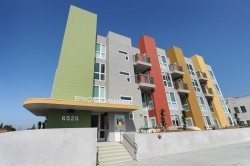
The new mayor should champion, protect and increase the supply of affordable housing. Photo from Los Angeles County.
11) Enact a desperately needed housing demolition/conversion ordinance to protect rent-regulated units from demolition and condo conversion, particularly as the market heats up and developers trigger another wave of speculation and gentrification. This is particularly important in order to protect affordable rental housing near transit stations.
12) Help break the logjam on an inclusionary mixed-income housing ordinance by advocating for state legislation to give cities the clear authority to adopt inclusionary housing.
13) Champion SB1, the Sustainable Communities bill sponsored by Senator Darrell Steinberg, which would give cities new tools to create revitalize neighborhoods with affordable housing and good jobs without triggering gentrification and displacement. He can help build a coalition of labor, business, environmentalists and community activists to support the legislation and lead the way in inventing a new generation of bottom-up community development. At the same time, the mayor should work with local housing advocates to create a permanent funding source for affordable housing in the city and county. To make sure this is a top priority, he should appoint a Deputy Mayor to coordinate the many city agencies involved in housing.
14) Make a firm commitment to oppose and stop any effort to weaken or eliminate rent control or housing code enforcement. In a city where more than half of all residents live in rental housing, the administration needs to quickly investigate complaints of rent-control violations and ensure strict landlord compliance. This will require much better outreach to tenants so they know their rights.
Public Transportation
15) Become a national leader in advocating for a federal transportation policy that turns transit investments into a win-win for cities across the country. L.A. has created the model, with the adoption of the Construction Careers policy and the U.S. Employment Plan, to make sure that public funds used to purchase buses and trains create good jobs for those who need them most. By working with business, labor, environmentalists and other transit advocates, along with the new Secretary of Transportation and L.A.’s Congressional delegation, Garcetti can urge Congress to put more resources into the America Fast Forward program, which will improve public transit, create good jobs and improve the environment in cities around the country, and provide LA Metro with the financing needed to build the 30-year transit program in 10 years.
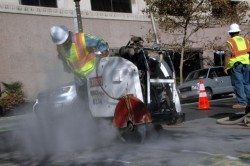
Los Angeles can continue leveraging transit funds to create good jobs where they're needed most, as it has with the groundbreaking Construction Careers policy at Metro.
16) Help L.A. dream big again, as it did in 2008, and begin planning what we could accomplish with another countywide ballot measure in 2016 to fund completion of the transit system. This includes extending the Crenshaw Line to Wilshire Boulevard and connecting it with a new line from Hollywood and Highland, forming a continuous system from North Hollywood to LAX. It also includes a light rail connection from the San Fernando Valley to LAX, extending the Foothill Gold Line to San Bernardino County and on to Ontario Airport, and extending the Eastside Gold Line to both Whittier and El Monte. In addition, it would complete the Greenline/Crenshaw connection to LAX and extend the Green Line to Torrance, finalize the West Santa Ana Line from downtown L.A. to Cerritos, connect the San Fernando Valley from Burbank Airport to the San Gabriel Valley and finish the “Subway to the Sea” along Wilshire Boulevard.
17) Collaborate with LA Metro to build out the new strategic plan that’s underway for first mile/last mile bicycle, pedestrian and shuttle improvements.
Budgets, Taxes and Finance
18) In terms of the city budget, raise revenues by closing loopholes like cracking down on city parking lot owners that skim money from the city’s parking tax. Don’t eliminate the business tax. And don’t blame municipal employees for the city’s budget woes.
19) Review and renegotiate the city’s financing deals with Wall Street banks. During the past decade, the city (including the Port of Los Angeles and LAX) got swindled by banks just like many homeowners did. Banks gouged the city with predatory fees and interest rates, increasing the city’s debt load. Debt service and finance costs together now constitute a huge drain on the city’s budget. Last year, for example, the city paid $560 million, or 8.4% of its expenditures, to service its debt. The city should make the banks renegotiate these deals on better terms and thus save money that is now being siphoned off by Wall Street, whose reckless practices crashed the nation’s (and L.A.’s) economy in the first place.
20) Help build a statewide coalition to champion a California constitutional amendment that lowers the local voter threshold to 55% and restores democracy to the voting process. Why should every “no” vote count twice as much as a “yes” vote? Reducing the local voter threshold will enable voters to step up and provide local governments, and school districts, with the revenue that’s needed to make government work for everyone.
21) Work with L.A. County, the United Way and employers to guarantee that every eligible working person in the city gets the Earned Income Tax Credit, a federal program that boosts the income of the working poor but is sadly underused. Expanding enrollment in the EITC would bring tens of millions of dollars into the local economy.
Education
22) Use his bully pulpit to make sure L.A. stops catering to the out-of-state corporations and billionaires, like Walmart and Rupert Murdoch, who want to privatize our public schools, rely on high-stakes testing to evaluate students and teachers, and treat teachers like hired hands rather than professional educators. L.A. has more charter schools than any other big city. A handful of them – like the L.A. Leadership Academy – are innovative and creative. Most of them, however, are educational fast-food franchises. Research shows that most charters are no better and often much worse than public schools in terms of learning outcomes, especially for low-income students and English-language learners. The mayor should use his influence to refocus attention on what’s needed to fix our schools: smaller class sizes, expanded pre-school, more collaborative professional development for teachers and more state funding for public education (California now ranks 47th in per-student funding).
Health Care
23) Work with L.A. County to make sure that eligible residents are enrolled in the new Affordable Care Act so they have access to health care services from local providers, especially community health clinics.
Immigration Reform
24) If Congress passes comprehensive immigration reform, support groups like the Coalition for Humane Immigrant Rights in LA (CHIRLA) to provide aspiring Americans with basic immigration services.
Media Ownership
25) Lend his influence to the effort to keep the Koch brothers or Rupert Murdoch from buying the Los Angeles Times and help find a consortium of local civic leaders to purchase the paper and restore local ownership (or stewardship) that cares more about the city than about quarterly earnings.
Finally, Garcetti must recognize that his success as mayor will depend in part on the ability of L.A.’s progressive movement – unions, community organizing groups, environmentalists, public health advocates, community development organizations, enlightened businesses and others – to join forces around a common agenda to catalyze good jobs, livable neighborhoods and a healthy environment. I hope that our new mayor will follow the example of FDR, who told his progressive supporters: “I agree with you. Now go out and make me do it.”

-

 Latest NewsDecember 8, 2025
Latest NewsDecember 8, 2025This L.A. Museum Is Standing Up to Trump’s Whitewashing, Vowing to ‘Scrub Nothing’
-

 Latest NewsDecember 10, 2025
Latest NewsDecember 10, 2025Capital & Main, L.A. Times Win Sidney Award for Reporting on Child Farmworkers
-

 StrandedDecember 9, 2025
StrandedDecember 9, 2025Giving Up on the Dream: Asylum Seekers Try Other Options in Mexico
-

 Locked OutDecember 16, 2025
Locked OutDecember 16, 2025This Big L.A. Landlord Turned Away People Seeking Section 8 Housing
-

 Column - California UncoveredDecember 12, 2025
Column - California UncoveredDecember 12, 2025They Power the U.S. Economy, But Will Struggle to Afford Health Care
-

 Column - State of InequalityDecember 11, 2025
Column - State of InequalityDecember 11, 2025A Little Place Called Home?
-

 The SlickDecember 19, 2025
The SlickDecember 19, 2025‘The Poor Are in a Very Bad State’: Climate Change Accelerates California’s Cost-of-Living Crisis
-

 Locked OutDecember 23, 2025
Locked OutDecember 23, 2025Section 8 Housing Assistance in Jeopardy From Proposed Cuts and Restrictions

